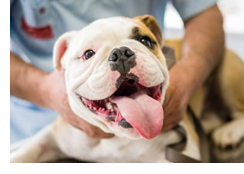
If you’ve noticed that your pet has a new lump, especially if it is growing quickly or causing discomfort, we recommend booking a consultation with our veterinary team for a proper assessment to test a lump. With physical examination and further laboratory testing if needed, we can differentiate tumours from other types of tissue swelling (e.g. inflammation, infection or cysts) and ascertain the specific type of tumour.
Confirming the exact type of tumour affecting a pet is important, as it tells us how the tumour is likely to behave, i.e. whether it is benign (harmless) or malignant (capable of invading and damaging local tissues or spreading elsewhere in the body to cause unwellness).
But how do we test a lump?
The first step is determining the cell type involved. If the lump is easily accessible and your pet is cooperative, we can sometimes perform a fine needle aspiration during the initial consultation. This involves passing a fine needle into your pet’s lump, and then transferring the collected material onto a glass slide to examine under the microscope. Some common lumps, such as lipomas and mast cell tumours, can often be diagnosed this way.
However, if your pet is wriggly, or if the lump is very firm, difficult to access or we’re particularly concerned about it, we may recommend booking your pet in for a surgical biopsy under general anaesthesia. Depending on the extensiveness of the lump, we may remove the entire lump or just a portion, and send the sample to a laboratory for testing.
Once we have a diagnosis for your pet’s lump, we can then make informed recommendations on whether they require any further testing or treatment.
It’s always best to test a lump! To book a consultation with one of our Pet Doctors Vets please give our team a call on 5576 0400.
Find more interesting articles and Pet Doctors news on our Facebook and Instagram pages
If you would like to make a booking with us you can now book online!

